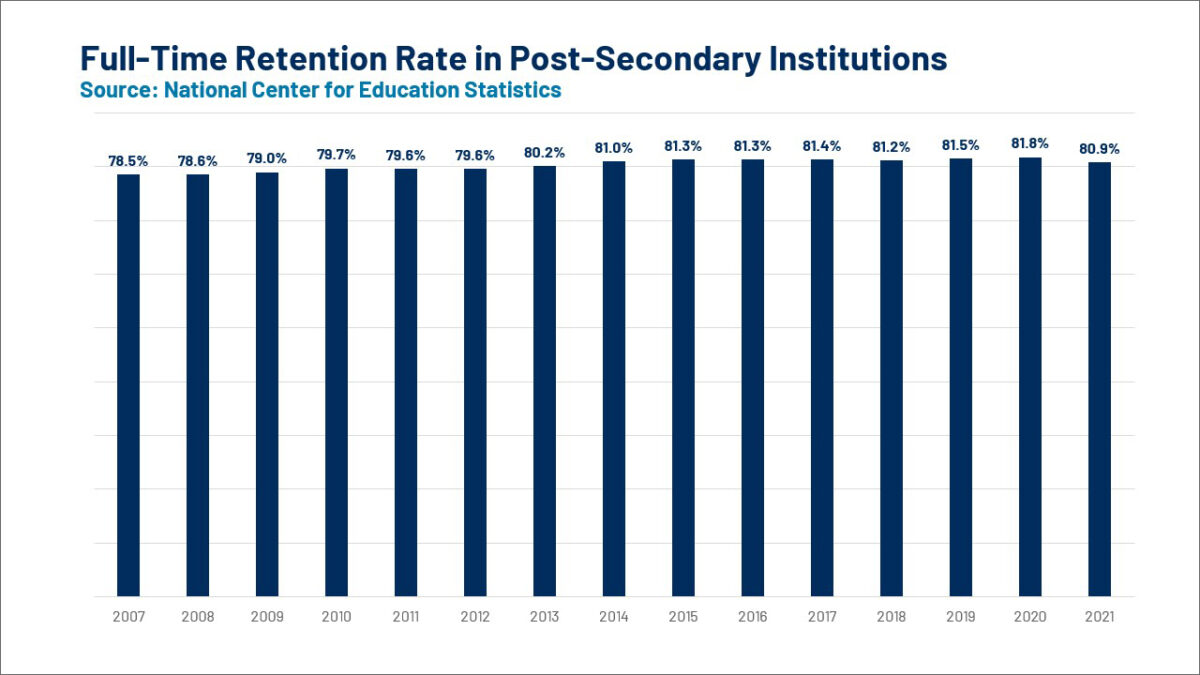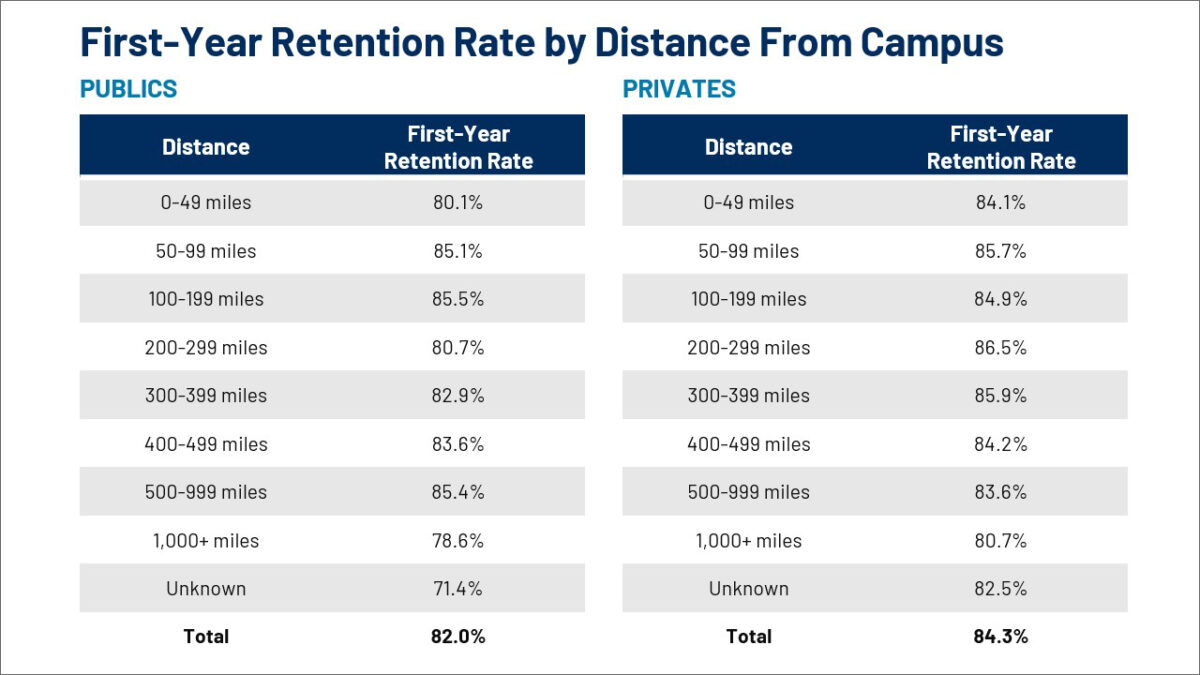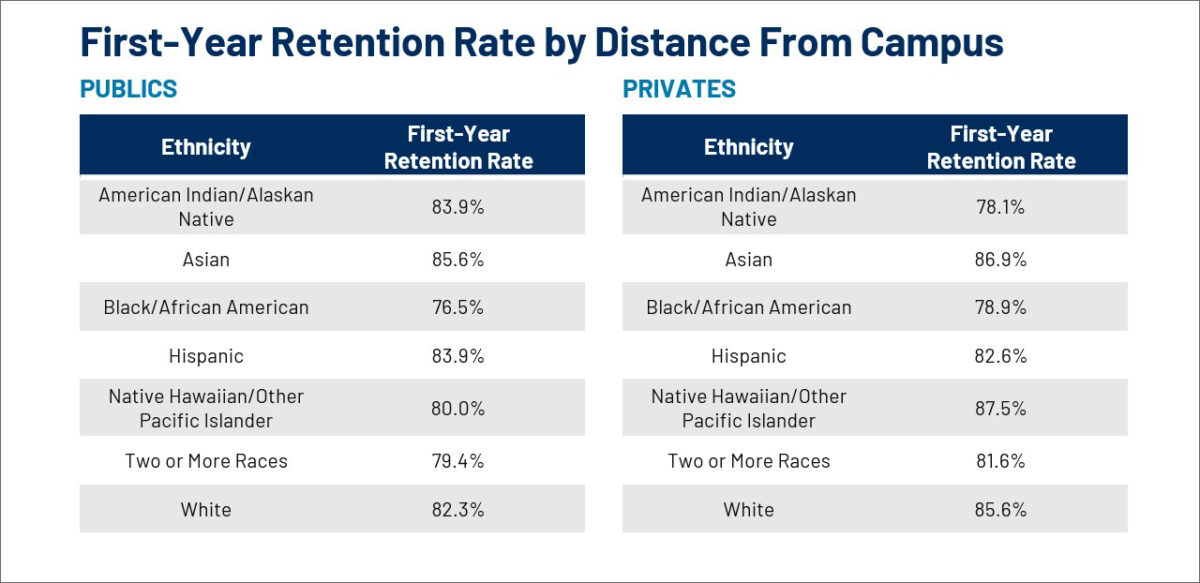When it comes to maximizing retention at your institution, “the key is to be proactive, not reactive,” says Ben Plache, Ph.D., Director of Client Services at MARKETview.
So, what steps can you, as an enrollment leader, begin taking right now to ensure you’re doing everything you can to retain the students you’ve worked so hard to recruit? Plache suggests you start by asking yourself these three questions:
1. “How well do I understand our inquiry pool?”
Knowing early on which students are most at risk of not retaining is key to understanding if you’ve recruited a class that is likely to persist through their first year. Therefore, a best practice would be to leverage everything you’ve learned about each student through the recruitment process and use that knowledge to create a structure for differentiated intervention.
By identifying hidden risks, student by student, you can know more about who’s the right-fit for your institution sooner than ever before.
At MARKETview, our proprietary platform combines data from 60M+ unique student records and 120+ million households then compares it with other schools – giving our partners an unparalleled view into which students stay and which students leave.
As this graph indicates, retention has remained relatively constant for the past fifteen years, proving how difficult it can be to move the needle on this crucial metric.

MARKETview Partners Continue to Outpace the National Averages

2. “How can I recruit to retain?”
Once you have a solid read on the students you’re recruiting, you can create action plans. When doing so, it’s critical to think about subsets of students who typically pose greater retention risks and could benefit from additional, specialized outreach. Three of the most important groupings are:
Point of Inquiry – When a high school student first expresses interest – what we refer to as their inquiry class year here at MARKETview – has a meaningful impact on how well they retain once they enroll. That’s because, on average, students who inquire during sophomore or junior year of high school have an average retention rate of 88.1% versus 81.1% for those who inquire during their senior year of high school. This gap of 7 percentage points is meaningful and equates to disruptions in educations as well as millions of dollars in lost revenue for colleges and universities.
Distance from Campus – Instead of only thinking about where a student is from as either “in-state or out-of-state,” we recommend instead using the concept of distance bands: how far away a student is from campus. At MARKETview, we see significant drops in retention for our public partners at three specific distances: 0-49 miles (1.9 percentage points) from campus, 200-299 miles from campus (1.3 percentage points), and 1,000+ miles from campus (3.4 percentage points). The differences are not as pronounced for our private partners, where we see a significant drop at 1,000+ miles from campus (3.6 percentage points) – all of which supports the idea that, for retention, distance is more prohibiting than state lines.

Are you able to look at your students through the lens of distance from campus, instead of just in-state and out-of-state? How does retention change by distance band at your campus, and how does this inform your student success decisions?
By providing decision grade analytics on demand, MARKETview can flag retention risks in your entering class and inform your strategies and investments for effectively managing them.
Ethnicity – We all know that underrepresented minorities and students of color tend to retain at lower rates. However, this assumption can miss the important nuance of how different populations within the larger cohort of students of color retain, and how these rates have changed over time. Analysis of first-year student records across MARKETview partners from public and private institutions shows the rate at which students of color and students not of color retain is similar. Once again, access to accurate, real-time data can be a difference maker in retention success.


At MARKETview, we recognize that financial aid is highly connected to retention, and we can seamlessly connect those two data sets – making it more feasible for you to achieve your goals.
3. “What can I do throughout freshman year to limit retention risk?”
Now that you have a more grounded idea of which students pose greater retention risk, be sure to stay in regular communication with them. One of the most impactful avenues here is to require advising for this audience, especially academic advising as falling behind academically is a key indicator of likelihood to matriculate. With that in mind, Plache suggests:
Invest in Advising – Faculty are often tapped to assist here, but they aren’t trained in the advising discipline and their available meeting time with students is usually limited. Adding dedicated professional advisors will ensure students at risk of retaining receive the level of attention and support they need.
Don’t Give Students an “Easy Out” – For students thinking of dropping their schedule (via an online option), require them to physically meet with a trained advisor first. This personal intervention can be a game changer for students by offering, sometimes relatively simple, solutions that students never knew existed, and prevent them from slipping through the cracks.
Learn from the Past – Document the main reasons why students haven’t retained in recent years and start preemptively addressing those situations. A smart starting point would be to segment those who did not retain into two groups: stop outs and transfers. Each will have telling characteristics that can inform planning for the future.
Interested in learning how MARKETview can help with first-year retention (as well as other enrollment objectives) at your institution? Connect with us for a short, personalized demo. We’d welcome the opportunity to support you in achieving your goals.
